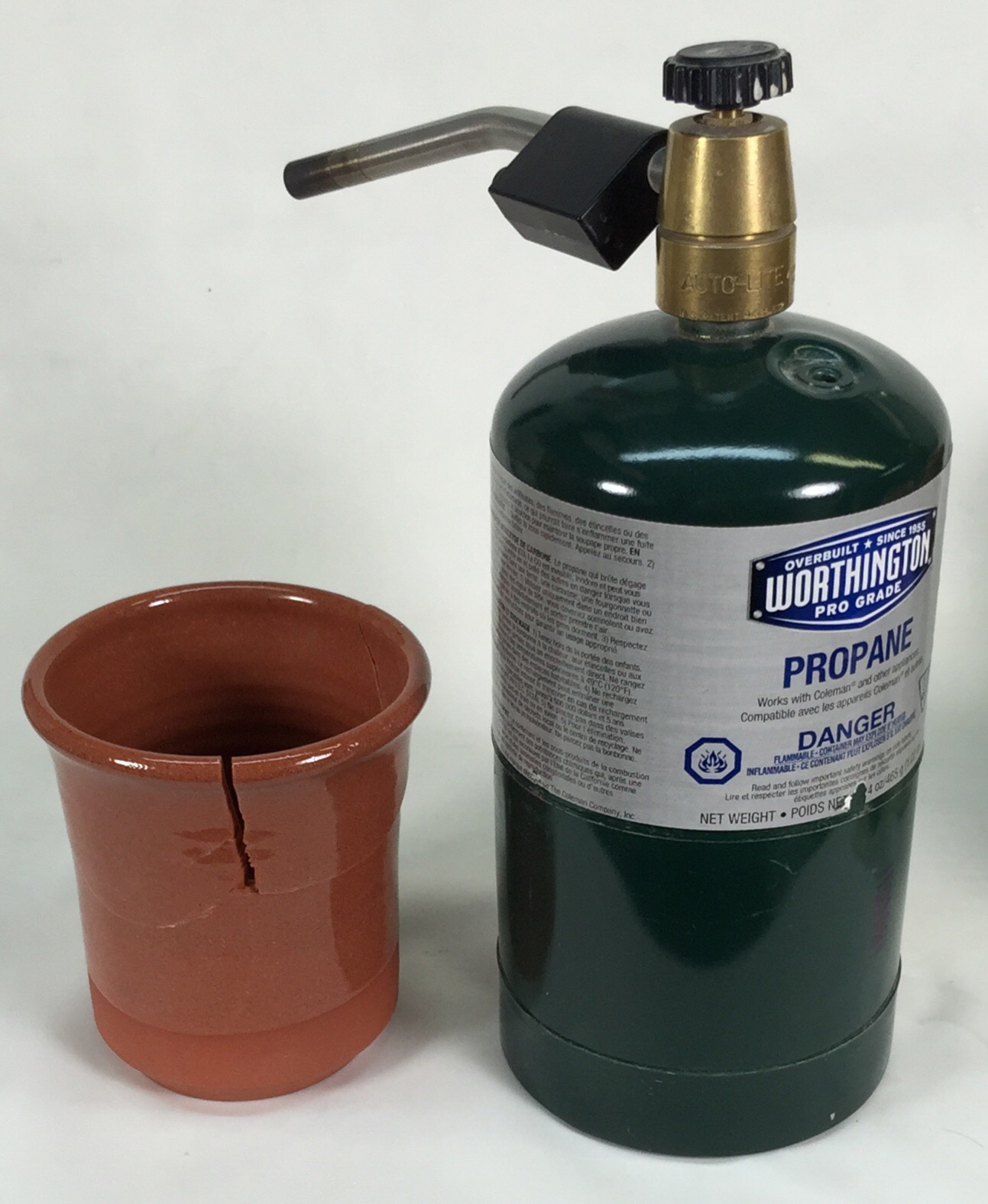Terra cotta and a surprising thing about thermal shock
This terra cotta cup is glazed with G2931G clear glaze (insight-live.com/material/1660">Ulexite based) and fired at cone 03. It survives 25 seconds under direct flame against the sidewall before a crack occurs. Typical porcelains and stonewares would survive 10 seconds. Super vitreous porcelains 5 seconds. This is an advantage of earthenware. Sudden changes in temperature cause localized thermal expansion, this produces tension and compression that easily cracks most ceramics. But the porous nature of earthenware absorbs it much better. During initial testing I found better performance for glazed earthenware (vs. unglazed), but in later testing they proved to be fairly similar. The TSFL test on consistently size tiles can be used to log more precise results.
Pages that reference this post in the Digitalfire Reference Library:

This post is one of thousands found in the Digitalfire Reference Database. Most are part of a timeline maintained by Tony Hansen. You can search that timeline on the home page of digitalfire.com.
